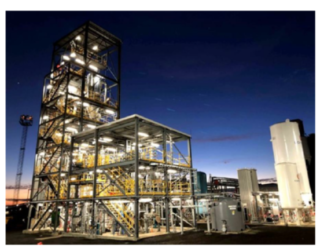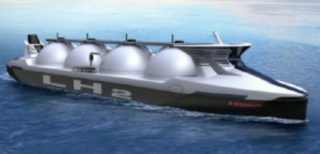-
Hydrogen production begins successfully at the Hydrogen Energy Supply Chain project
Date posted:
-
-
-
Post Author
Greg Kelsall
-
-
![]()
Brown-coal-to-hydrogen gasification pilot plant
A Japanese-Australian venture has begun producing hydrogen from brown coal in a pilot project that aims to demonstrate that liquefied hydrogen can be produced and exported safely to Japan.
Called the Hydrogen Energy Supply Chain (HESC), the project is being developed in Victoria State, Australia, with support from Japan. It aims to develop and demonstrate technologies for the production, storage and transportation of clean hydrogen from lignite fuel in the Latrobe Valley and to establish a supply chain through to utilisation in Japan, initially at the 1MW Kobe CHP plant.
![]()
HESC project supply chain
The pilot phase encompasses a gasification plant in the Latrobe Valley and a liquefaction facility at the Port of Hastings. The AU$500 million (US$390 million) project is supported by the Japanese government and Japanese industry, together with the Australian and Victorian governments which have each contributed AU$50 million (around US$39 million) in funding. The project is being carried out by the CO2-free Hydrogen Energy Supply-chain Technology Research Association and a consortium consisting of Iwatani, Marubeni, Kawasaki Heavy Industries (KHI), J-Power, Sumitomo and AGL Energy Ltd.
Motivation for the project from the Australian side of the consortium is the declining domestic use of lignite, leaving lignite deposits as potential stranded resources, together with interest in the low-cost generation of hydrogen. CCUS is not included in the initial pilot phase due to the relatively small amount of carbon dioxide produced during the pilot phase. Carbon offsets have therefore been purchased for the CO2 emitted in the pilot phase, although it is recognised that for the subsequent commercial phase, CCUS will be needed, with the captured CO2 stored underground in cooperation with the CarbonNet storage project.
J-Power are leading activity on the coal gasification and hydrogen refining facility, which started construction in November 2019 and began producing hydrogen in January 2021, following the Australian government’s removal of legal obstacles to the development of the Latrobe Valley hydrogen production facility and associated CarbonNet CCS scheme.
The HESC project involves mining and processing the brown coal, gasification, shift catalysis, hydrogen/carbon dioxide separation, hydrogen pressurisation and liquefaction, international ocean transport, and new ground transport vehicles and energy infrastructure. The pilot phase will produce 5,000 tonnes per year of hydrogen and 18,000 tonnes per year of ammonia, which is planned to increase to 10MtH2/y by 2030, requiring 200Mt/y of lignite, together with 125MtCO2/y storage.
In terms of project challenges, the key technical issue would appear to be demonstration of the supply chain to ship hydrogen to Japan, where cryogenic hydrogen transport is proposed, based on KHI’s technology.
![]()
Liquid hydrogen transport ship due for demonstration in mid-2020s to 2030



